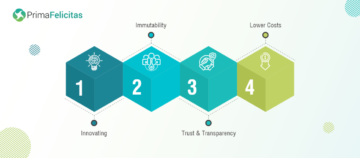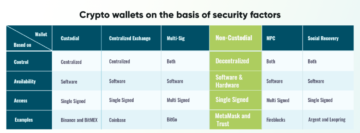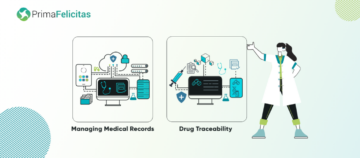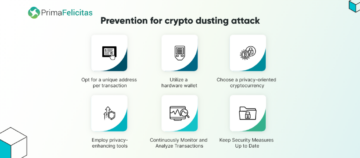
Money usage in general (personal use) and professionally is experiencing transformation in most parts of the world. It’s more visible in the Western part of the world as the research and development done in the field of decentralized finance, blockchain and similar technology is higher. In a few Eastern side nations, the focus is directed equally if not more while some countries have to face a couple of hurdles. But the main point is that since the inception of Bitcoin (in 2008) and Blockchain platforms, as well as its relevant applications, the curiosity, demand, and relevance, has increased so intensely that public organizations have started to imbibe the technology gradually. One way of seeing it is that Government-run institutions are recognizing and accepting the fact that utilization of decentralized platforms and applications will be the norm in coming days. Another way of looking at it is that credit to the deployment of the Internet in late 1900s-early-2000s, consumers are becoming more knowledgeable and practical as to why they’re preferring to use systems run on peer-to-peer base rather than an authoritative based system. This piece focuses on decentralized applications like Decentralized Finance (DeFi) and how it supports public goods.
One of the few reasons why authoritative systems have been working fine until recently (2008-09) is that a large percentage of the population trusted the financial institutions (private and public). It’s because of the trust factor as well as the reliability factor, that centralized based organizations operated without much friction. With the gradual decline of the trust factor in the finance sector and almost every sector, the need for an alternative came into the picture. Utilization of distinct decentralized platforms and applications have been a massive-hit (in other terms popular) in selective clusters. The issue at the moment the industry is facing is achieving sustainable growth and the ability to adapt and replicate in other industries. One solution among others is having some trustable and transparent user/node or a group of users/nodes which everyone in the grid trusts. According to this piece of research, the fourth industrial revolution can help reconstruct the trust scheme via reforming currency. One illustration which showcases effective employment of DeFi in supporting public goods is the “Principle of Responsible Investment”. One perception is that since the trades in stock and bond markets started being utilized by individuals across the world, the decline in trust started as a majority of stakeholders didn’t focus and invest much on contributing to the construction of the sustainable financial system. One of the benefits among others of the fourth industrial revolution (as expected by many technological and economic experts) is that through innovation in currency system, social capital, as well as infrastructure, would contribute extensively for community’s sustainability. The infographic displayed below showcases the intense relationship between economy(s) and open-sourced decentralized technologies. You will easily get the idea (from the infographic) that because blockchain operates on a peer-to-peer system, the issues arising in the present worldwide scenario can be best resolved by platforms which function on a real-time, decentralized, transparent, and secure platform.
The prototype mentioned above can be used as a reference for further research and development, as DeFi is still considered to be in its initial stages.
According to this piece’s thesis, advancements in Bitcoin and Ethereum happened to date have been “too little too late”. The plus point is that people in the blockchain field are walking the right path, but the issue (from the perspective of Devil’s Advocate) which is being mentioned is that the speed is slow. A grid with an absence of a formalized governance could lead to a “Tyranny of Structureless” (for example, EOS). The crux is that lack of formal and open governance process can steer into a chaotic as well as a non-transparent blueprint. The solution proposed for the problem is a mixture of digital economies and weighted-staked voting. One illustration which handles the funding of public goods and grants is GitCoin.
From the above information, you may have gotten some aspect of how DeFi is being used to assist public goods. As the field is upcoming, you can expect a lot of fresh updates which will resolve multiple issues simultaneously. To know more about stuff in Blockchain, Bitcoin, or need some guidance from a professional who has been in the industry for more than 5 years, visit Primafelicitas.
Looking for help here?
Connect with Our Expert for
a detailed discussion
Post Views: 46
- "
- About
- According
- across
- advancements
- advocate
- among
- Another
- applications
- being
- benefits
- BEST
- Bitcoin
- blockchain
- capital
- coming
- construction
- Consumers
- could
- countries
- Couple
- credit
- curiosity
- Currency
- decentralized
- Decentralized Applications
- Decentralized Finance
- decentralized finance (DeFi)
- DeFi
- Demand
- deployment
- Development
- digital
- easily
- eastern
- Economic
- Effective
- employment
- ethereum
- everyone
- example
- expected
- experts
- Face
- facing
- finance
- financial
- Financial institutions
- fine
- Focus
- fourth industrial revolution
- fresh
- function
- funding
- General
- goods
- governance
- grants
- Grid
- Group
- Growth
- having
- help
- here
- How
- HTTPS
- Hurdles
- idea
- increased
- industrial
- Industrial Revolution
- industries
- industry
- infographic
- information
- Infrastructure
- Innovation
- institutions
- Internet
- issues
- IT
- large
- lead
- looking
- Majority
- Markets
- more
- most
- Navigation
- open
- organizations
- Other
- Others
- People
- percentage
- personal
- perspective
- picture
- piece
- platform
- Platforms
- Popular
- population
- Posts
- present
- PrimaFelicitas
- private
- Problem
- process
- professional
- public
- real-time
- reasons
- relationship
- research
- research and development
- responsible
- Run
- sector
- similar
- So
- Social
- speed
- started
- stock
- support
- Supports
- Sustainability
- sustainable
- system
- Systems
- Technologies
- Technology
- the world
- Through
- trades
- Transformation
- Trust
- Updates
- Voting
- walking
- WHO
- without
- working
- world
- worldwide
- would
- years











